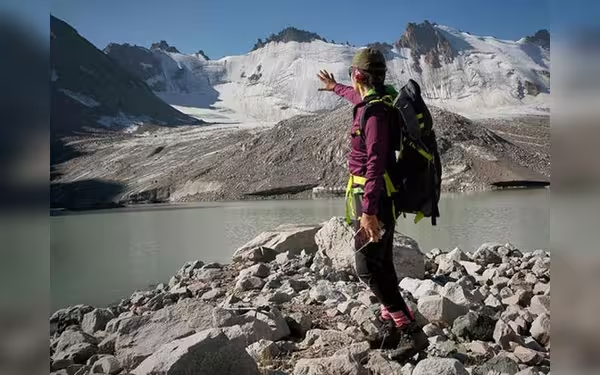Saturday, November 16, 2024 09:30 PM
Melting Glaciers Threaten Water Security in Central Asia
- Glaciers in Central Asia are rapidly disappearing.
- Melting glaciers threaten agriculture and drinking water.
- Limited resources hinder climate research in Kyrgyzstan.
 Image Credits: dailytimes_pk
Image Credits: dailytimes_pkMelting glaciers in Central Asia threaten water security and agriculture, raising urgent climate concerns.
In recent years, the alarming phenomenon of melting glaciers has become a pressing concern in Central Asia. This region, which includes countries like Kyrgyzstan, Kazakhstan, and Uzbekistan, is home to thousands of glaciers that are rapidly disappearing due to climate change. These glaciers are not just beautiful natural formations; they play a crucial role in the ecosystem and the lives of the people living in these mountainous areas. As temperatures rise, the impact of this melting is felt more intensely, raising serious questions about water security and food supply in a region already struggling with these issues.
High in the Kyrgyz mountains, scientist Gulbara Omorova has witnessed firsthand the dramatic changes in the landscape. Standing at an altitude of 4,000 meters, she recalls how a particular spot, once covered by a glacier, is now just a pile of grey rocks. "Eight to 10 years ago you could see the glacier with snow," Omorova explained. "But in the last three-to-four years, it has disappeared completely. There is no snow, no glacier." This stark observation highlights the rapid pace of climate change and its devastating effects on the environment.
The melting glaciers are not just a loss of beauty; they pose a significant threat to the people of Central Asia. Glaciers act as natural water towers, providing essential freshwater that supports agriculture and drinking water supplies. With the ongoing melting, these vital resources are dwindling, leading to increased concerns about food security in a region that already faces water shortages.
Equipped with measuring devices, Omorova and her team are diligently recording the changes in the glaciers. They have observed that the Adygene glacier has retreated by approximately 16 centimeters (six inches) each year, amounting to a staggering loss of over 900 meters since the 1960s. "The glaciers cannot regenerate because of rising temperatures," she noted, emphasizing the urgency of the situation.
According to a report by the Eurasian Development Bank, between 14 and 30 percent of the glaciers in the Tian Shan and Pamir mountain ranges have melted over the past 60 years. This trend is expected to worsen, with scientists predicting that 2024 could be the hottest year on record. As the climate crisis intensifies, the importance of research and monitoring in this field has never been greater.
Despite the critical nature of their work, resources for scientists like Omorova are limited in Kyrgyzstan, one of the poorest countries in the former Soviet Union. This lack of funding and support makes it challenging to address the growing environmental crisis effectively. As the glaciers continue to melt, it is essential for governments, organizations, and individuals to recognize the urgency of the situation and take action to mitigate the effects of climate change.
The melting glaciers of Central Asia serve as a stark reminder of the broader impacts of climate change. As these natural wonders disappear, they take with them the vital resources that sustain communities and ecosystems. It is crucial for all of us to understand the significance of this issue and work together to protect our planet for future generations.













